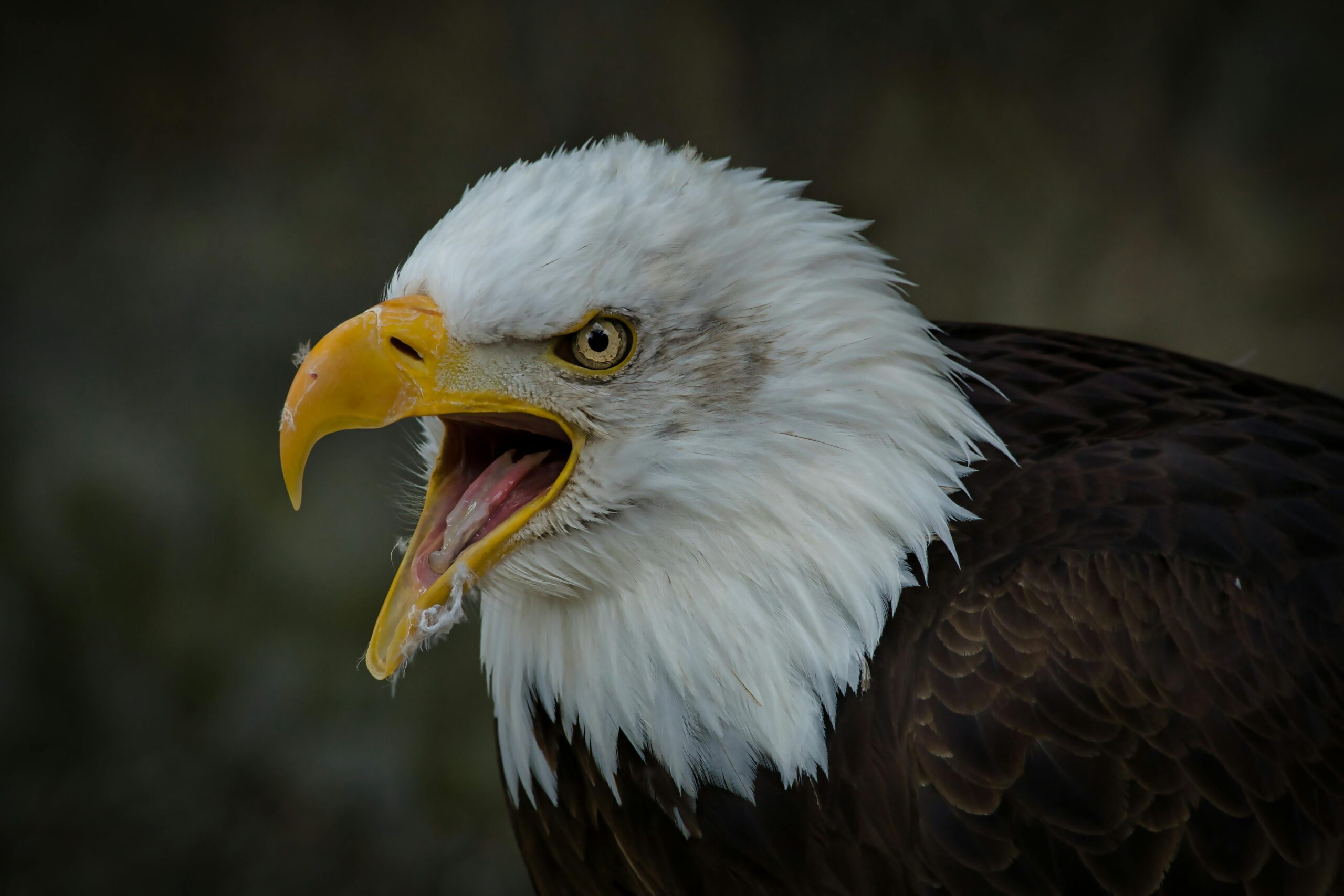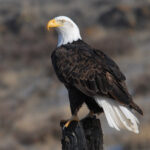Bald eagles have exceptional eyesight, allowing them to spot prey from great distances. Their eyes are approximately the same size and weight as human eyes, but the back of an eagle’s eye is flatter and larger, providing a much larger image than humans can see. The retina of a bald eagle has about a million cones per square millimeter in its central fovea, compared to 200,000 per square millimeter in humans.
Bald Eagles’ Visual Acuity
Scientists have calculated that if an eagle’s vision were the only difference between human and eagle eyes, an eagle could see a 3-inch mouse 446 feet away, which is 2.24 times better than human vision. This means that an eagle’s visual acuity is significantly higher than that of humans.
In addition to their high visual acuity, bald eagles have a unique feature called the nictitating membrane, a thin, semi-transparent eyelid that moves across the eye from the inner corner to the outer corner, acting as a sweeping wiper to keep the eye moist and clean. This membrane also protects the eagle’s eye from injury during hunting and flying.
Bald Eagles’ Long-Distance Sight
 Image source: Pexels by Anrita Krause
Image source: Pexels by Anrita Krause
Bald eagles can see an animal the size of a rabbit running from three miles away, which is a testament to their incredible eyesight. Their eyes are designed for hunting and survival, allowing them to spot prey from great heights and distances.
Comparison to Human Vision
Bald eagles have a visual acuity that is 2.24 times better than humans. This means that they can see details and colors more vividly than humans. Their eyes are larger and have a higher concentration of cones, which are responsible for color vision and detail.
Nictitating Membrane
The nictitating membrane is a unique feature of bald eagles that helps protect their eyes and keep them moist and clean. This membrane moves across the eye from the inner corner to the outer corner, acting as a sweeping wiper.
Hunting and Survival
Bald eagles’ exceptional eyesight is crucial for their hunting and survival. They can spot prey from great heights and distances, allowing them to successfully hunt and thrive in the wild.
Factors Affecting Bald Eagles’ Vision
Several factors can affect the vision of bald eagles, including:
- Age: Younger bald eagles have better eyesight than older ones, as their eyes may degrade over time.
- Environmental Conditions: Factors like weather, lighting, and distance can impact the eagle’s ability to see clearly.
- Injury or Illness: Any damage or disease affecting the eagle’s eyes can impair its vision.
Age and Vision
Younger bald eagles generally have better eyesight than older ones, as their eyes may degrade over time. This can affect their hunting and survival abilities.
Environmental Conditions
Factors like weather, lighting, and distance can impact the eagle’s ability to see clearly. For example, bright sunlight or poor visibility due to fog or rain can make it more difficult for the eagle to spot prey.
Injury and Illness
Any damage or disease affecting the eagle’s eyes can impair its vision, which can be detrimental to its hunting and survival.
Conclusion
In conclusion, bald eagles have exceptional eyesight, with a visual acuity that is 2.24 times better than humans. Their eyes are larger and have a higher concentration of cones, allowing them to see colors and details more vividly. The nictitating membrane is a unique feature that protects their eyes and keeps them moist and clean. These adaptations enable bald eagles to spot prey from great heights and distances, ensuring their survival in the wild.
References:
– https://en.wikipedia.org/wiki/Eagle_eye
– https://journeynorth.org/tm/eagle/Vision_part1.html
– https://www.nationaleaglecenter.org/learn/faq/


